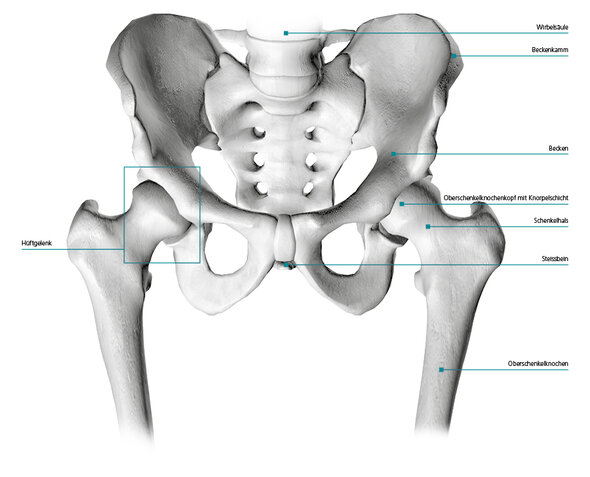The hip joint
The hip joint is the connection between the pelvis and the thigh bone and thus joins the trunk of the body with the legs. Stability is provided to the joint by strong ligaments, a joint capsule and the surrounding musculature.
The hip socket (acetabulum) and the rounded head of the thigh bone (femur) that rests like a ball in the hip socket are covered with a smooth cartilage layer. Between the two cartilage-covered articular surfaces is a viscous fluid, the so-called synovia. The joint cartilage, a 1-2 mm thick layer, covers the entire bone surface inside the joint. This elastic and water-containing tissue makes sure that the joint’s motion sequence is nearly frictionless and smooth so that rotation, flexion, extension, abduction and adduction of the leg and walking can occur without problems.
Injuries or damage to these cartilaginous structures are usually beyond remedy. In the medium or long term, they may lead to joint wear – better known as osteoarthritis.

